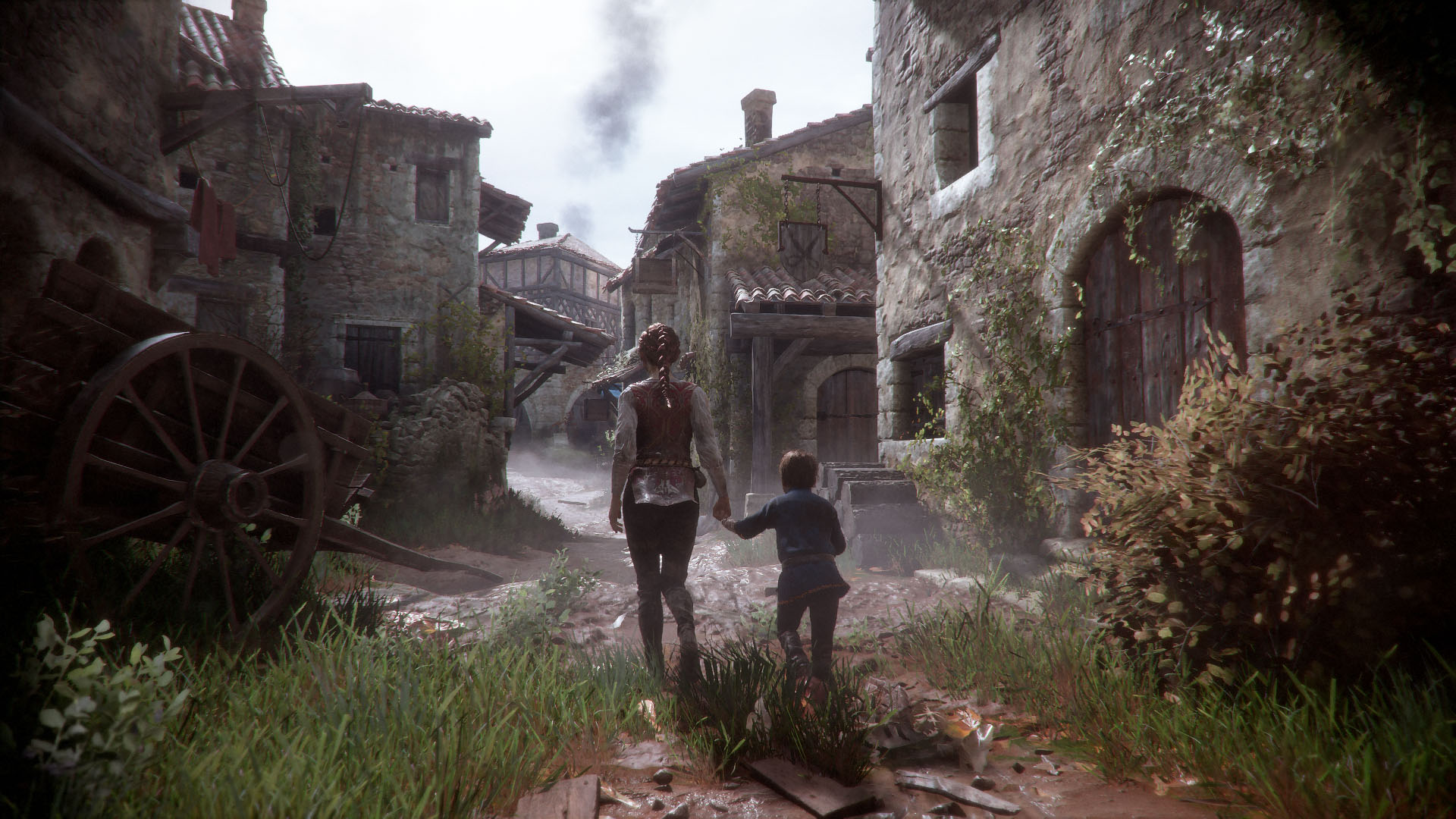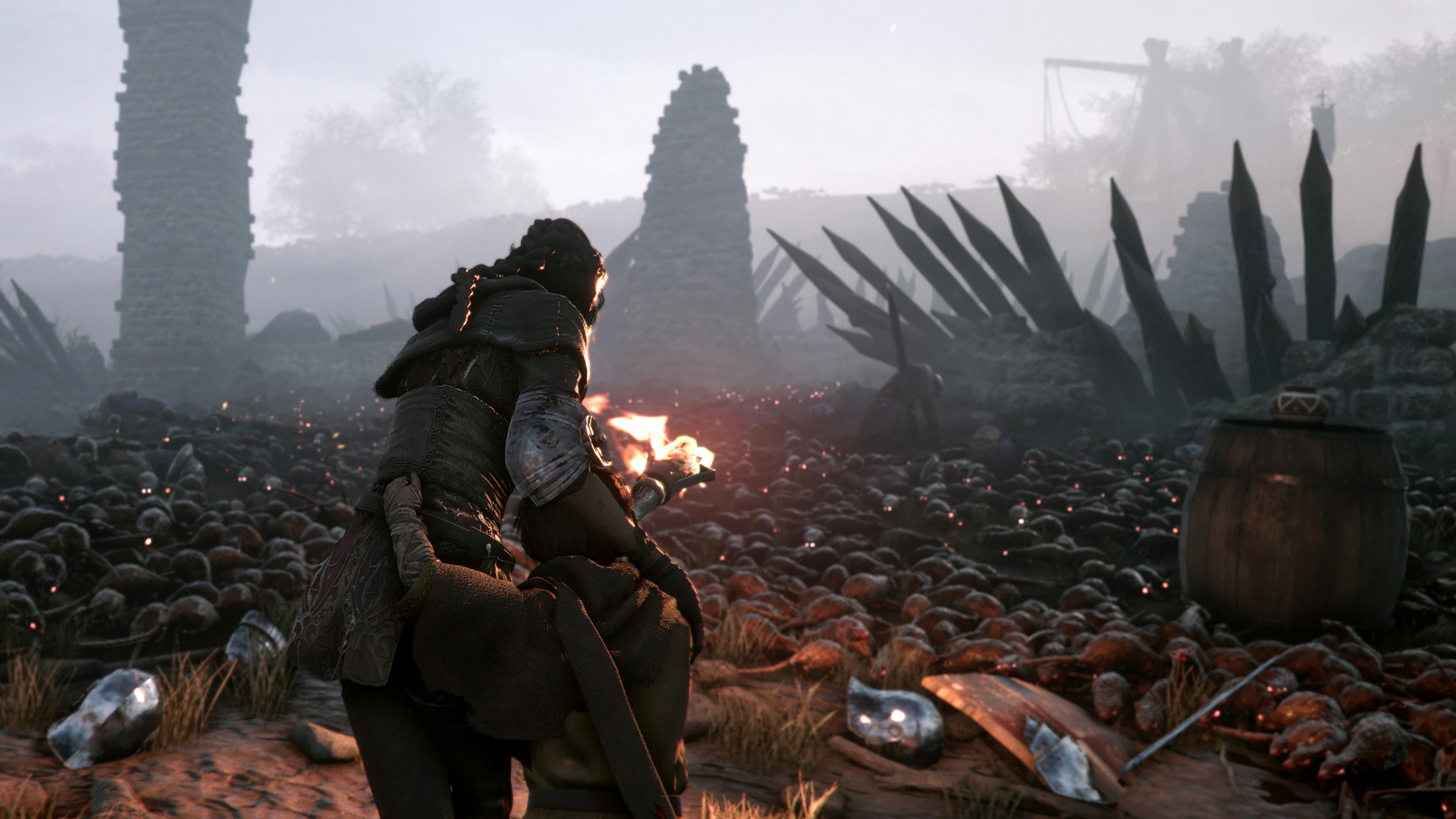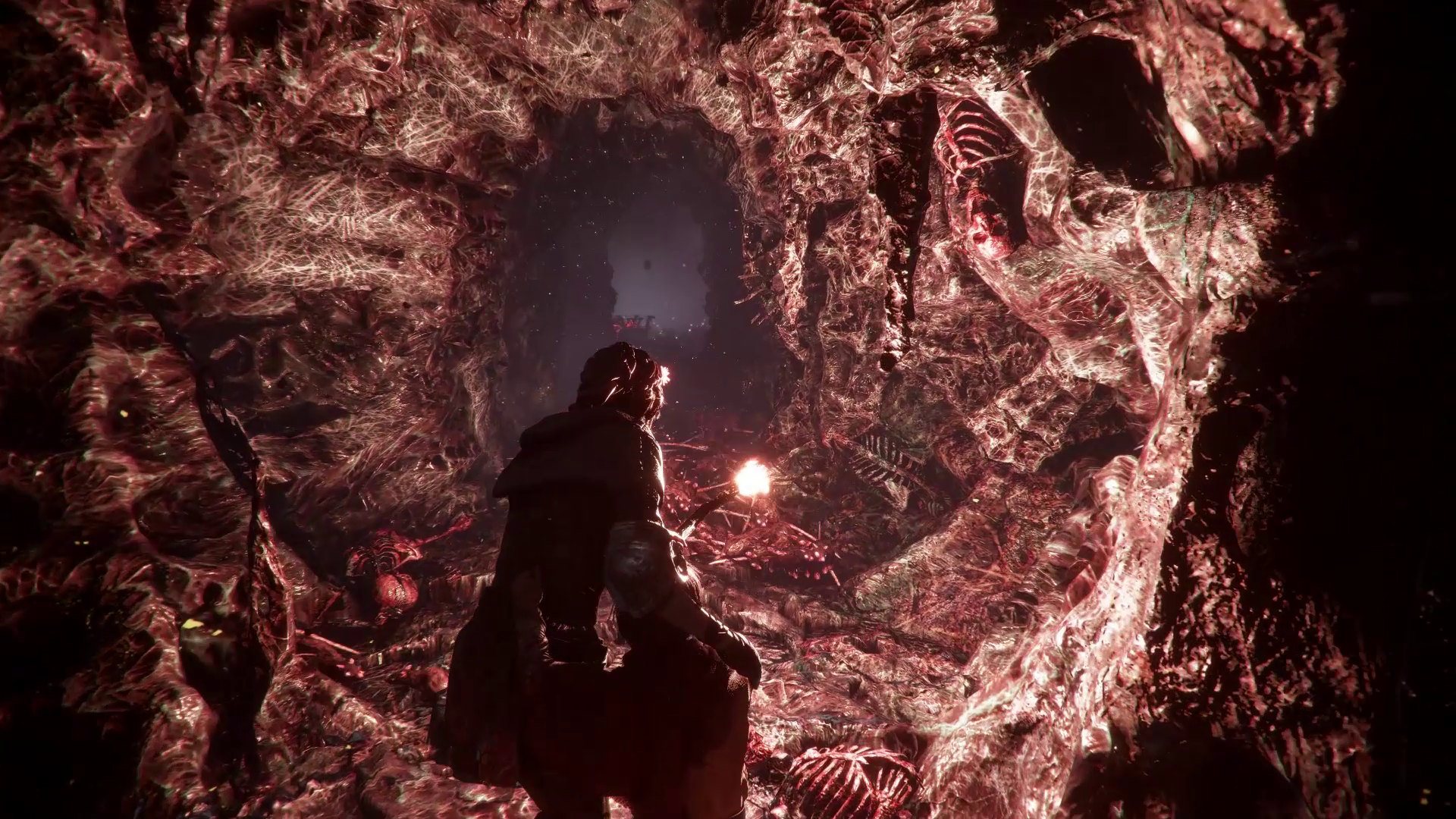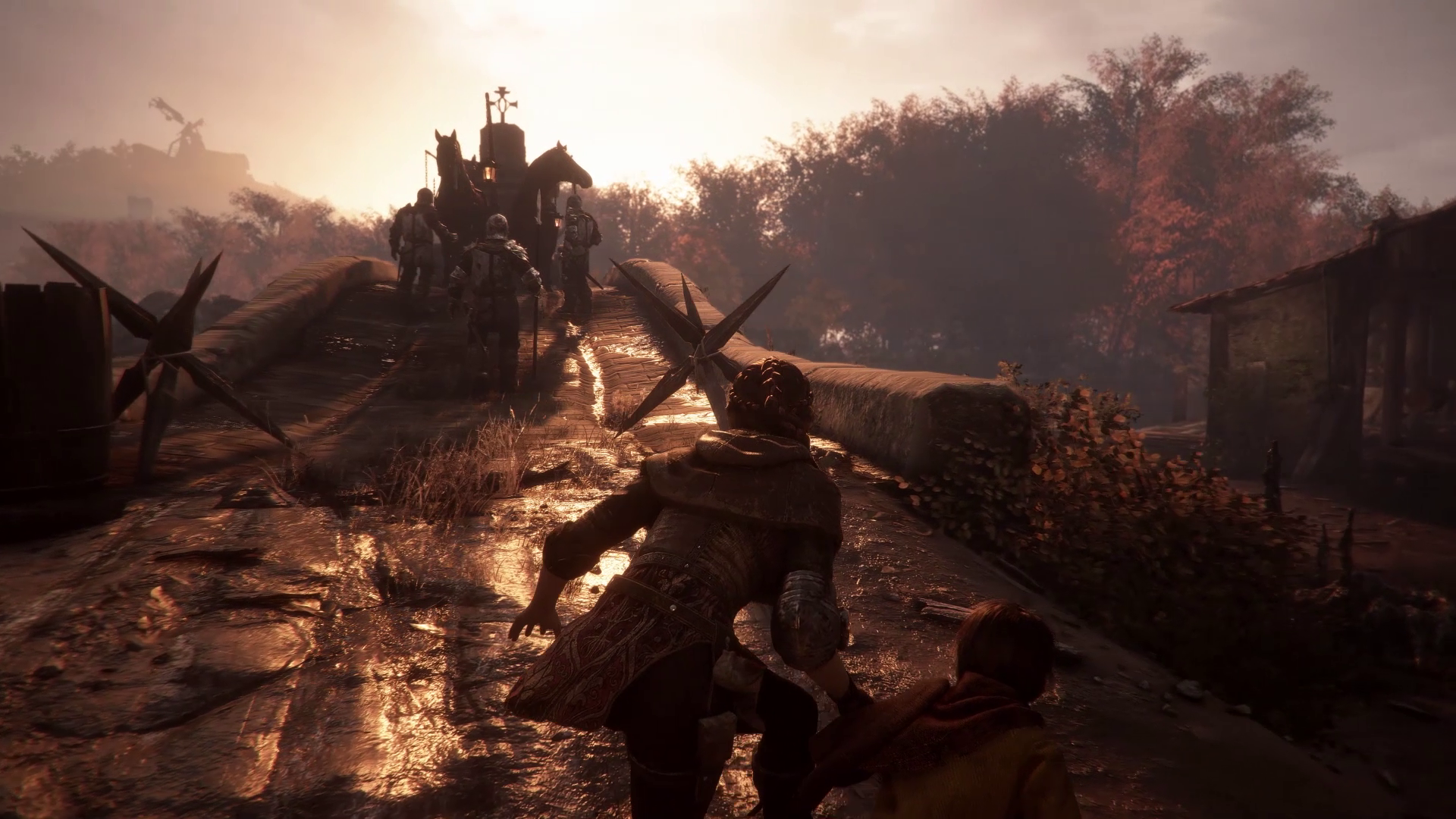A Plague Tale: Innocence preview: "Playing a child being pursued by brutal adults is frightening."
Official PlayStation Magazine goes hands-on with the story-driven puzzle adventure which promises to be one of 2019's breakout hits

Something vile is worming its way through the kingdom of France, something even worse than the barbaric and brutal invasion of the English – because this is the time of the 100 Years’ War, and the conflict already has the population on edge. Villagers are plagued with sickness and bites in the night, as well as the unwelcome presence of the merciless English troops. In A Plague Tale: Innocence - the upcoming puzzle adventure with echoes of The Last of Us and Brothers: A Tale of Two Sons - you take the role of Amicia, a 15-year-old girl. She becomes solely responsible for her brother, Hugo, who suffers from a mysterious malady, after their family is torn apart. He’s been sick to the point where he’s been hidden for his five years of life, locked away as his mother tinkers with medicine to cure him. Forced from their sheltered existence, seeking whatever safety they can from the terrors of the night, the siblings are pursued by the Grand Inquisitor’s forces, who want to capture Hugo.

This feature first appeared in Official PlayStation Magazine. Get the latest PlayStation news on your doorstep early and for a better price! Subscribe to OPM here.
Playing through the beginning of the game, we get a handle on what nasty things will be getting in the siblings’ way on their journey through France. As their home is invaded, we have to guide Hugo through the house and gardens while avoiding the violent English soldiers brought here by Sir Nicholas, a big, mean fellow in an intimidating dark, cross-shaped helmet and armour covered in spikes. It’s the type of escort stealth you’d expect. We take shelter behind objects and in tall grass, sometimes asking Hugo to stick close to us (he holds our hand) and at others to stay put to ensure we can smuggle him safely past the troops. We throw rocks at metal objects to distract soldiers, and lob pots that make a noise as they shatter too.
How stealth works (spoiler: it's not annoying)

What’s key is that the sneaking and hiding doesn’t feel cumbersome – everything is simple and easy to understand. Things we can interact with are clearly marked, and throw lines snap comfortingly to their targets. As Hugo moves alongside us, it never feels like any sort of stupid AI is letting us down. It’s unobtrusive, and it works. Playing a child being pursued by these brutal adults is tense and frightening. We feel a genuine sense of danger, as for the most part we are powerless.
Shortly after stopping to repair Amicia’s slingshot, we end up in a situation where we have no choice but to take the life of a pursuer who will otherwise kill Amicia and Hugo. And it feels like a genuinely hard moment. Many games fail to grapple with what it means for a 15-year-old to be put in that position. It is heavy enough that we avoid killing whenever possible for the rest of our time with the game. “After that you will think about that every time you encounter a guard,” Kevin Choteau, the game’s director, tells us when we ask him about it.
"Our idea is based on historical fact, but told in the way we wanted – to do something more."
Kevin Choteau
“Everything we’ve taken was based on some historical fact we have found,” he says as we explain the reason why we feel dread as we make our way through a diseased village is that the plague actually happened. This is real. “[But] I wouldn’t say it’s an historical game. We’ve read a lot about what happened, and aspired to put those elements as much as we could into our game – but it’s a tale. [...] Our idea is based on historical fact, but told in the way we wanted to do – to do something more.”
The rats are somehow scarier than ones in real life
Not long into our session, we encounter some of the exaggeration that Choteau talks about, in the shape of the rats themselves. The real-life link between rats and the bubonic plague is debated – some scholars now think humans’ own fleas and lice spread the disease – but here they are very much a plague in their own right, bursting forth en masse like geysers, marking their nests in a horrible gunk, and picking clean the bones of anything that strays into the darkness they inhabit. You need to use fire in inventive ways to get past them, as well as distract them with things like meat to feast on while you dash past.
You can tell where the rats have been by the gnawed-bare skeletons of their prey. Sometimes the bodies are half-eaten where the victims have tried to reach the light; the fleshy walls of the rats’ nests are lined with bony remains. It’s all so delightfully grim. “We never show free violence or free gore,” Choteau tells us. “It’s always related to what we are saying.” In a way, the rats are less directly threatening than the violent adults out to hurt the two children, and you can use them to eliminate your pursuers, but they’re a terrifying force of nature that you can’t hope to understand all the same. We ask Choteau what he’d say to people who are so scared of rats in real life they might be put off by A Plague Tale. “That’s the main reason,” he says with a gleam in his eye. “It will work ten times better on them.”
Weekly digests, tales from the communities you love, and more
The tale begins: what we encountered in the first four chapters of the game

Chapter 1
Discovering a strange rot in the forest we return to our noble household, only to struggle to escape with our lives as we’re pursued by the Inquisition.

Chapter 2
We hope to find safety in a village but it’s deserted… then we stumble upon people burning the sick, and they want to get their hands on us next.

Chapter 3
Hiding from the mob in the ruins of the village church, we must make our way through crypts to escape. We meet the villainous vermin for the first time.

Chapter 4
Near a river, we try to reach a farm as night falls, and we have to weave between English patrols and piles of rotting farmyard animals.
A Plague Tale: Innocence could be a highlight of the best new games of 2019

Games Editor Oscar Taylor-Kent brings his year of Official PlayStation Magazine and PLAY knowledge. A noted PS Vita apologist, he's also written for Edge, PC Gamer, SFX, Official Xbox Magazine, Kotaku, Waypoint, GamesMaster, PCGamesN, and Xbox, to name a few. When not doing big combos in character action games like Devil May Cry, he loves to get cosy with RPGs, mysteries, and narrative games. Rarely focused entirely on the new, the call to return to retro is constant, whether that's a quick evening speed through Sonic 3 & Knuckles or yet another Jakathon through Naughty Dog's PS2 masterpieces.


